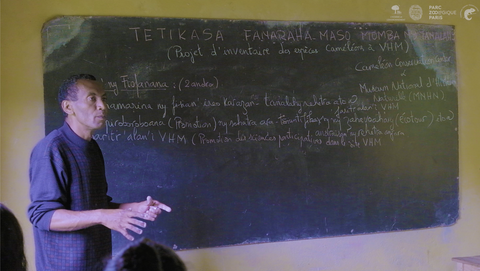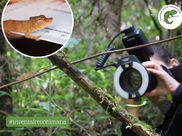
The chameleons of Vohimana, Madagascar
Collect crucial data to strengthen conservation strategies, support research and promote a participatory science approach.
Photo: Martin Etave
Project summary
Madagascar, a jewel of biodiversity, is facing increasing fragmentation of its forests and greater than expected genetic diversity among various groups of chameleons, requiring immediate exploration of the remaining forest fragments. The Vohimana private reserve, a key transitional ecosystem covering 2,000 hectares, represents an exceptional opportunity to deepen our understanding of these species.
This project aims to explore the entire reserve and collect exhaustive data on the chameleons. A protocol, including standardised photos and environmental data, is applied to each observation to ensure rigorous data collection. The compilation of data will result in an updated species list, spatial distribution map and detailed environmental descriptions, providing an in-depth understanding of the ecology of chameleons in the reserve.
The project will enable chameleon species to be identified, thereby strengthening conservation strategies. It will provide training for local guides, engaging them in field missions, generating direct income and strengthening their role in raising awareness. Discoveries will be exploited in a participatory science approach with actions involving the local population, students and eco-volunteers, creating income-generating opportunities. The compilation of data will form an essential basis for conservation.

Deliverables: An updated list of chameleon species present in the reserve. A map showing the spatial distribution of the various species. Descriptions of the environmental conditions (temperature, hygrometry and UV index) for each species, providing an understanding of their ecology and conservation issues. he results will be the subject of conferences and publications in scientific journals.
Project progress in a few figures
Session 1 (January to April 2023), Session 2 (July 2023), Session 3 (February to May 2024) and Session 4 (July 2024)
107
Forest expeditions
447
km of track covered
580
Chameleons observed
12
Species identified
Project news
Supporting this project means investing in a scientific, ethical and sustainable approach to biodiversity conservation.


























